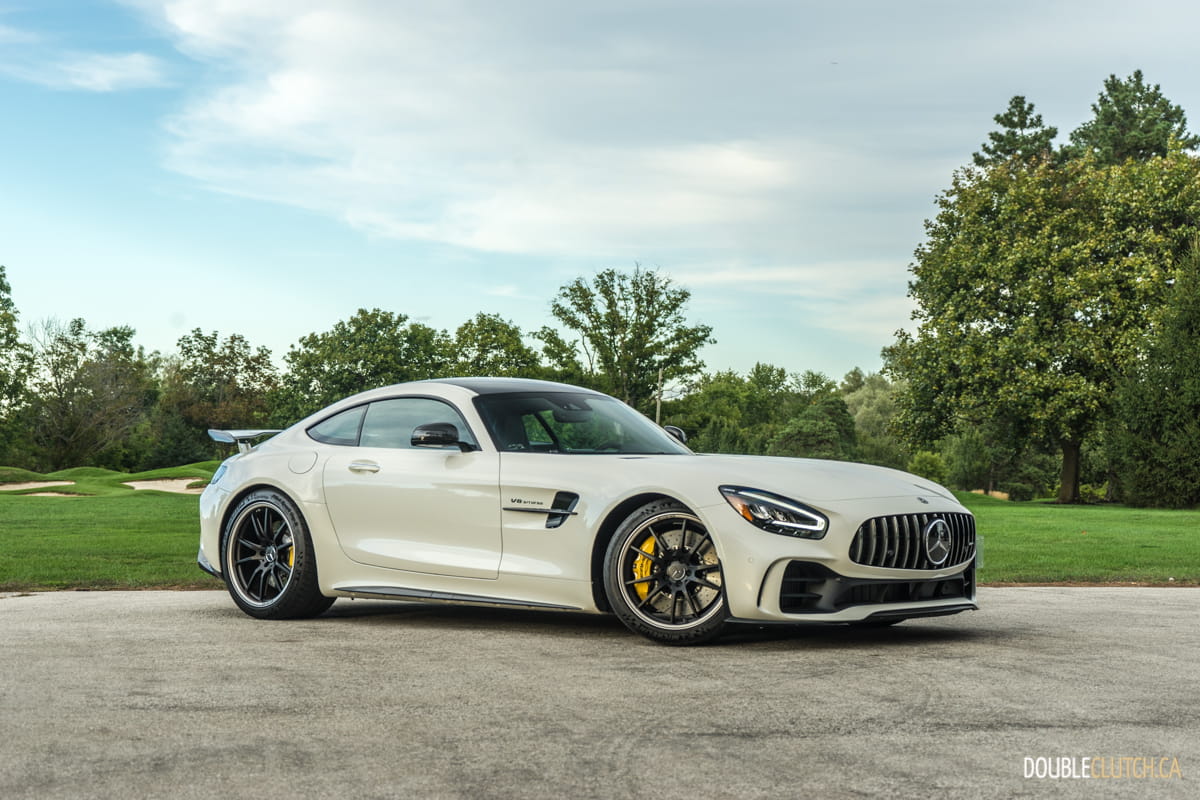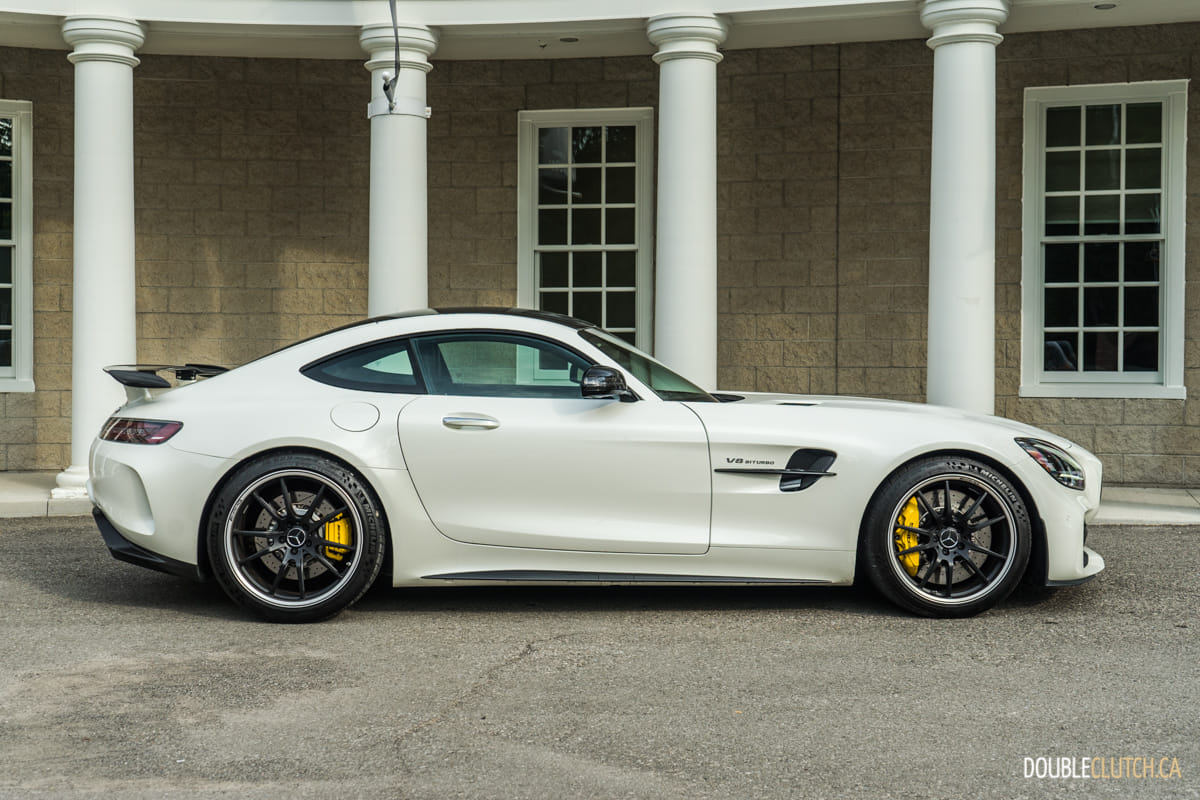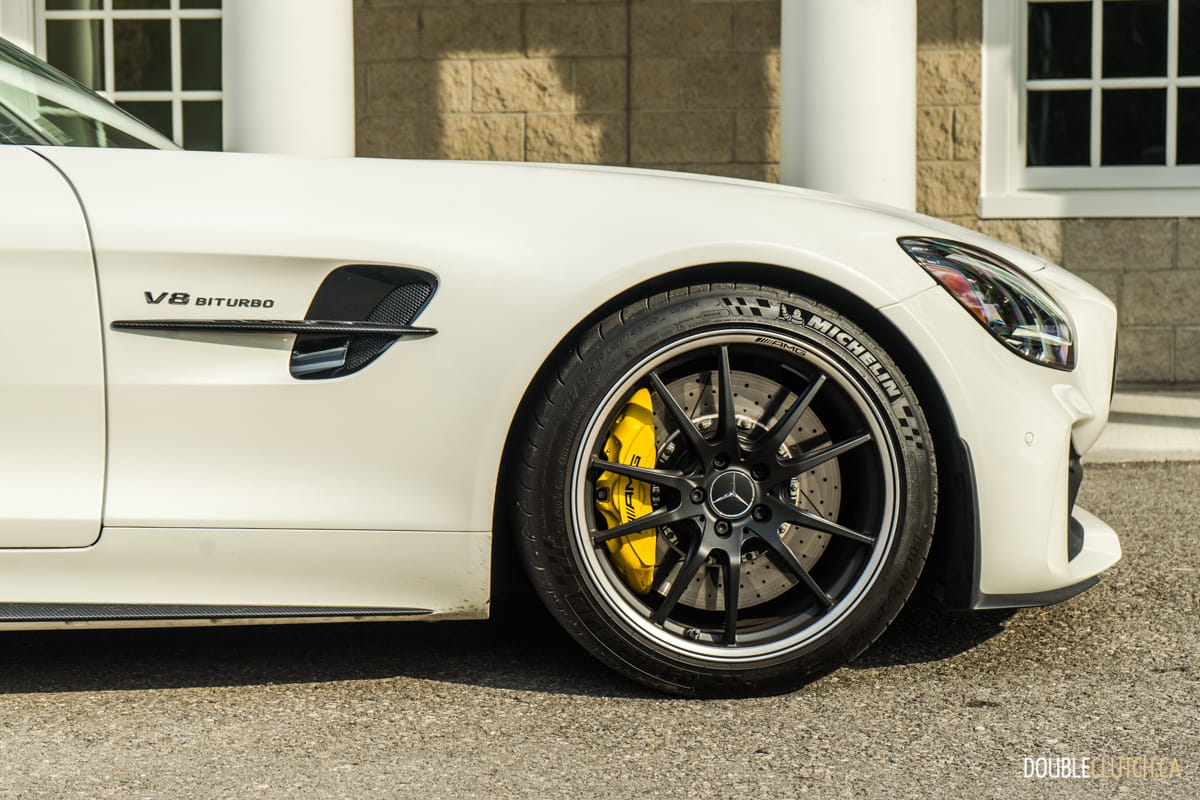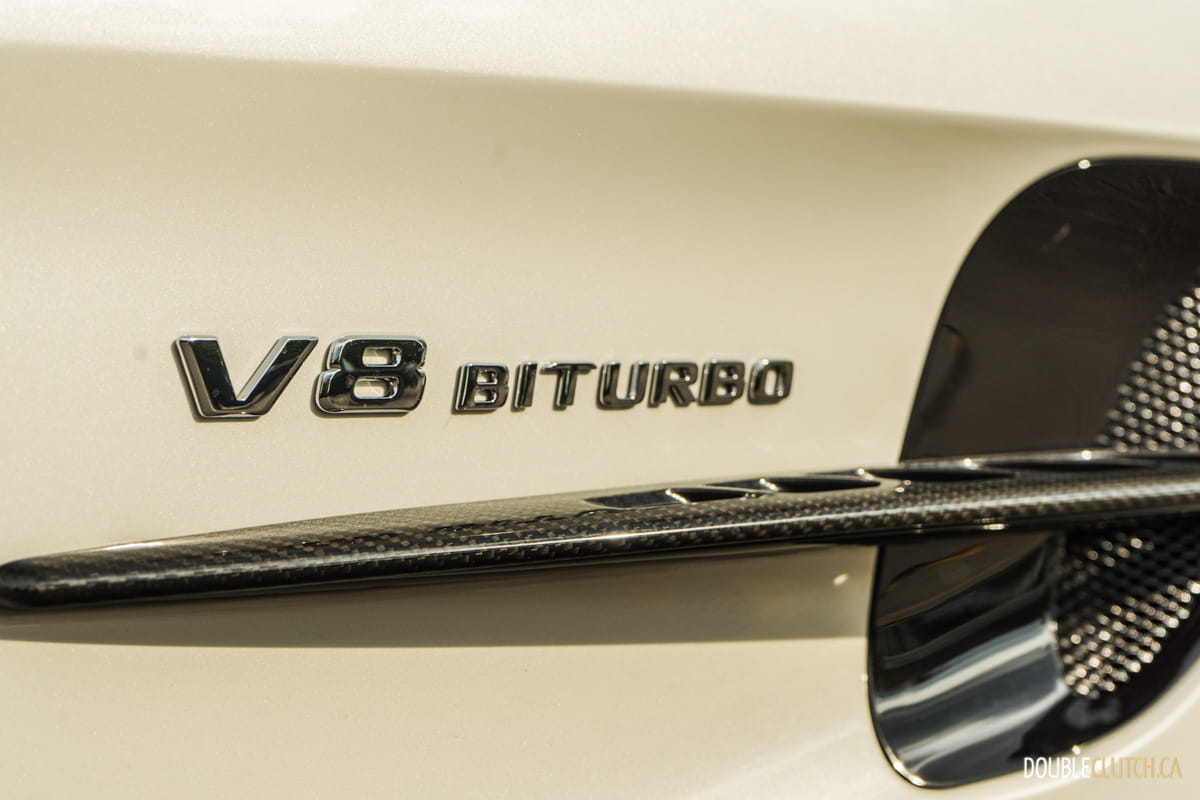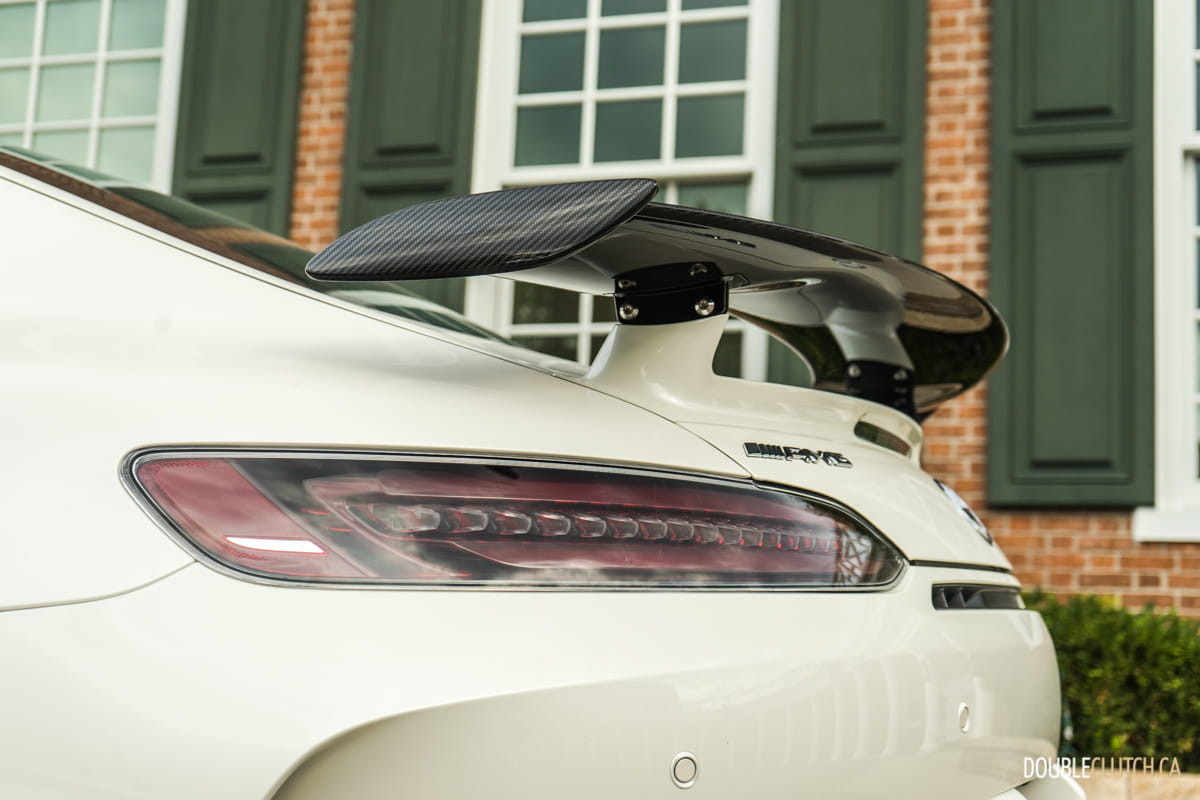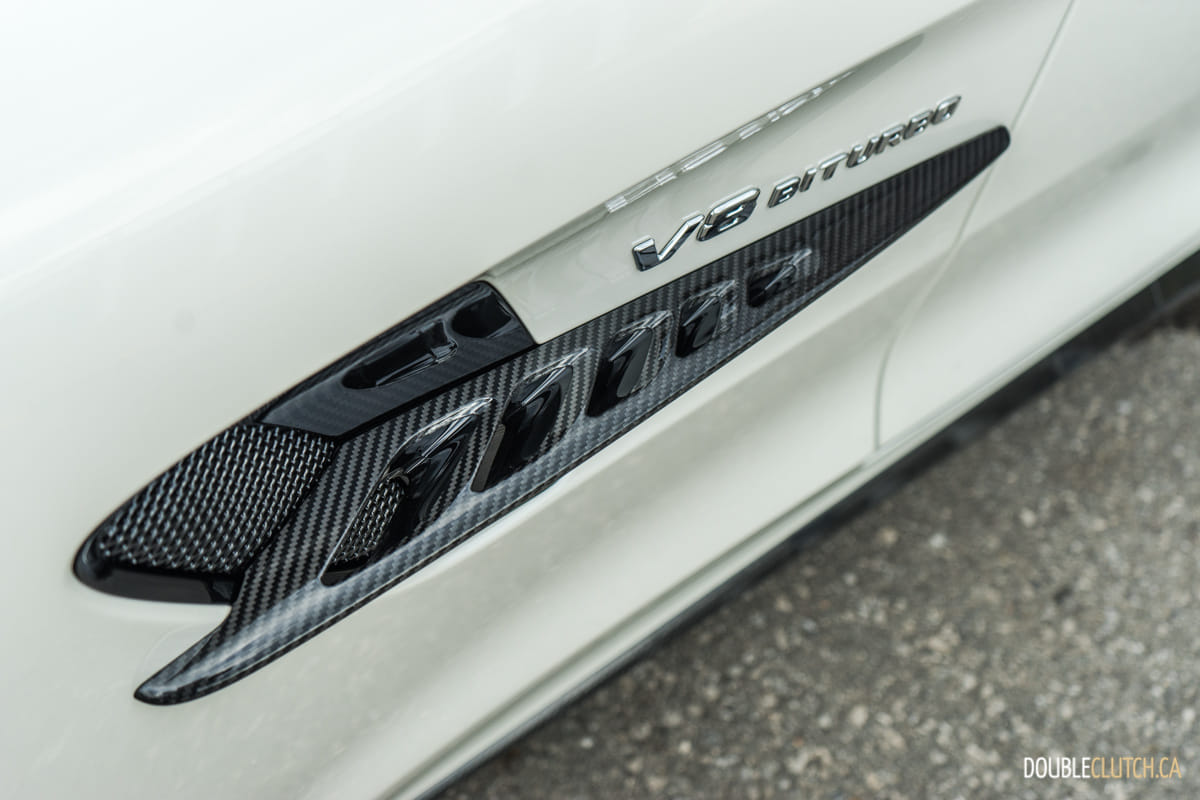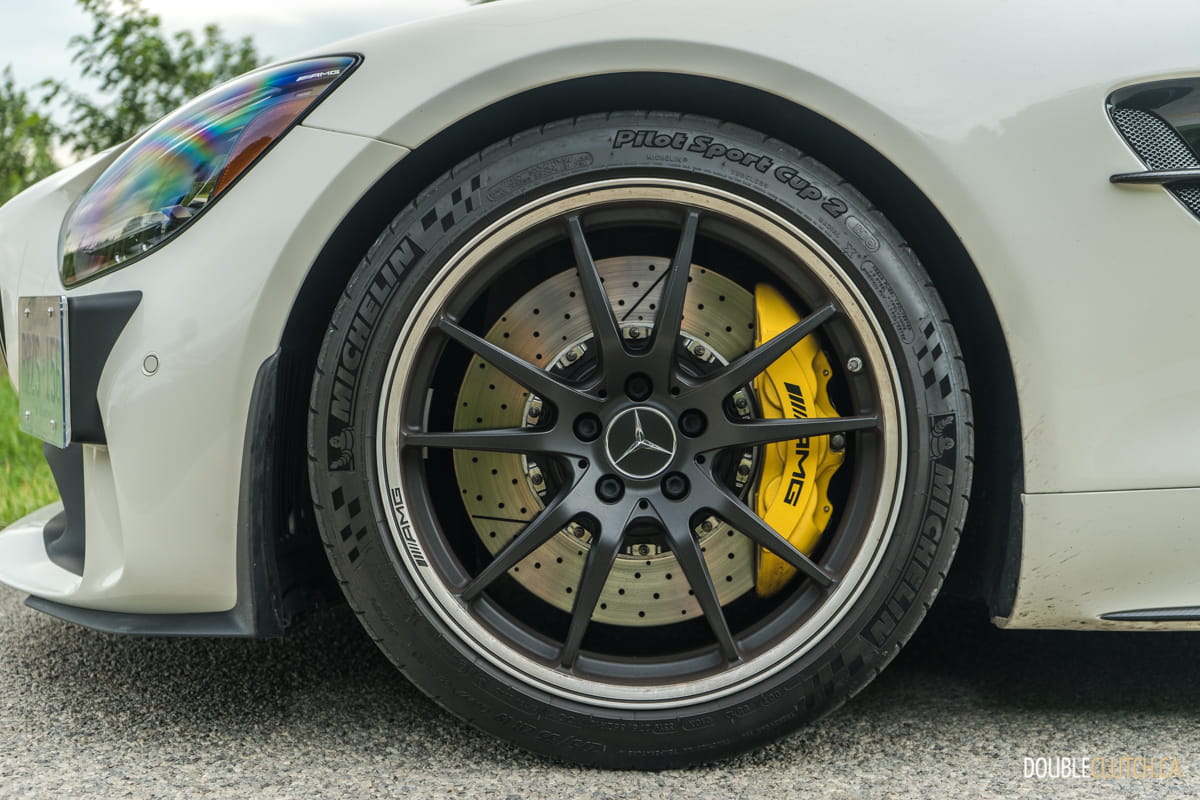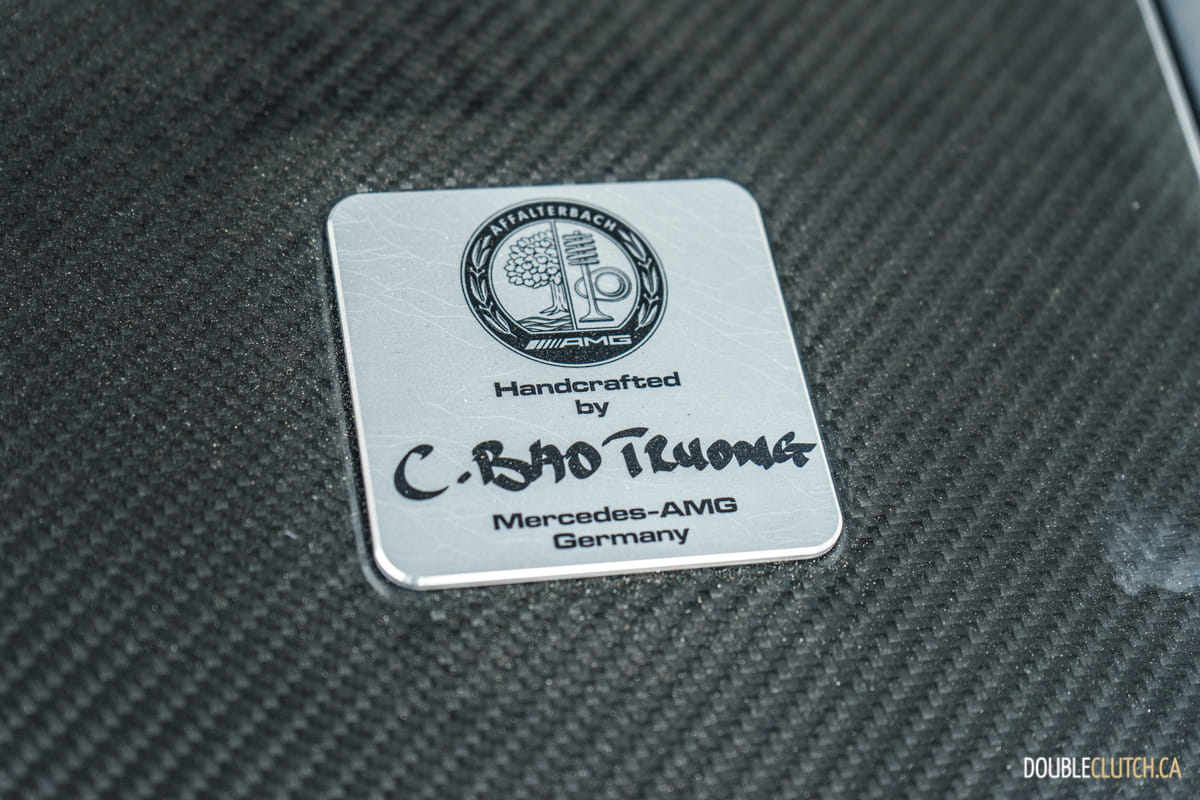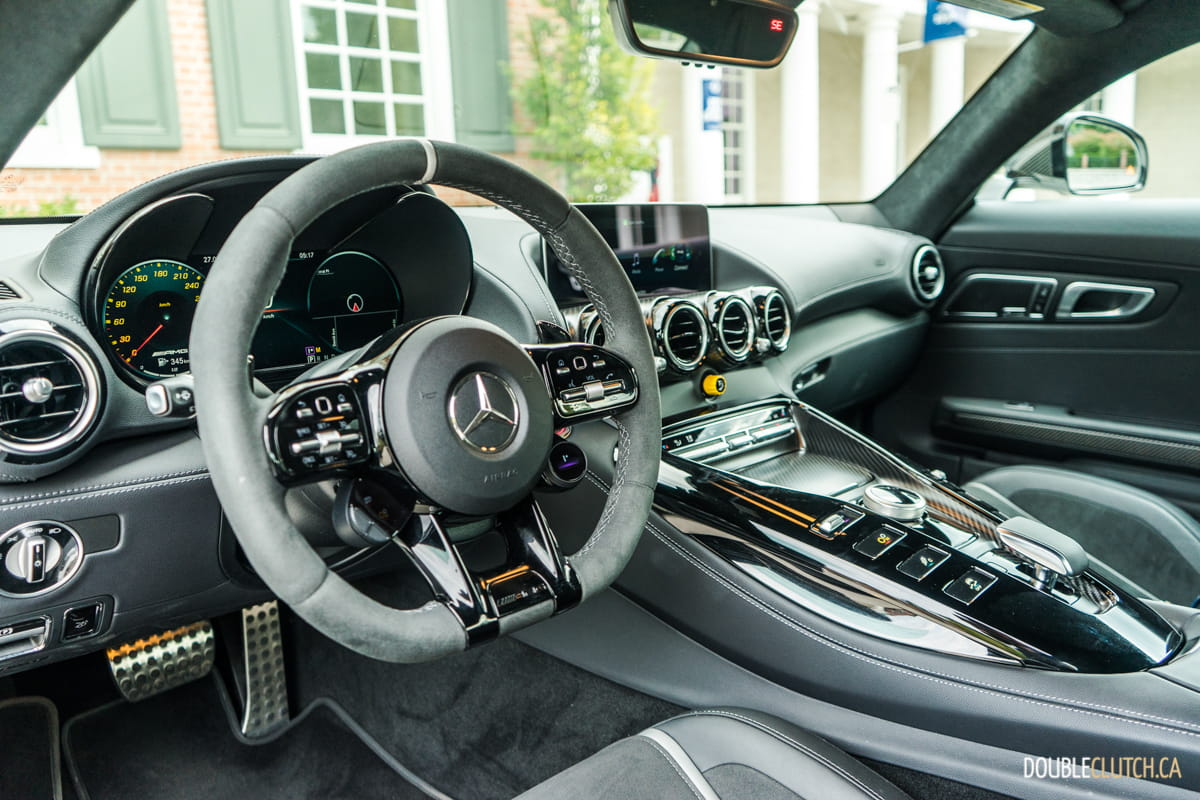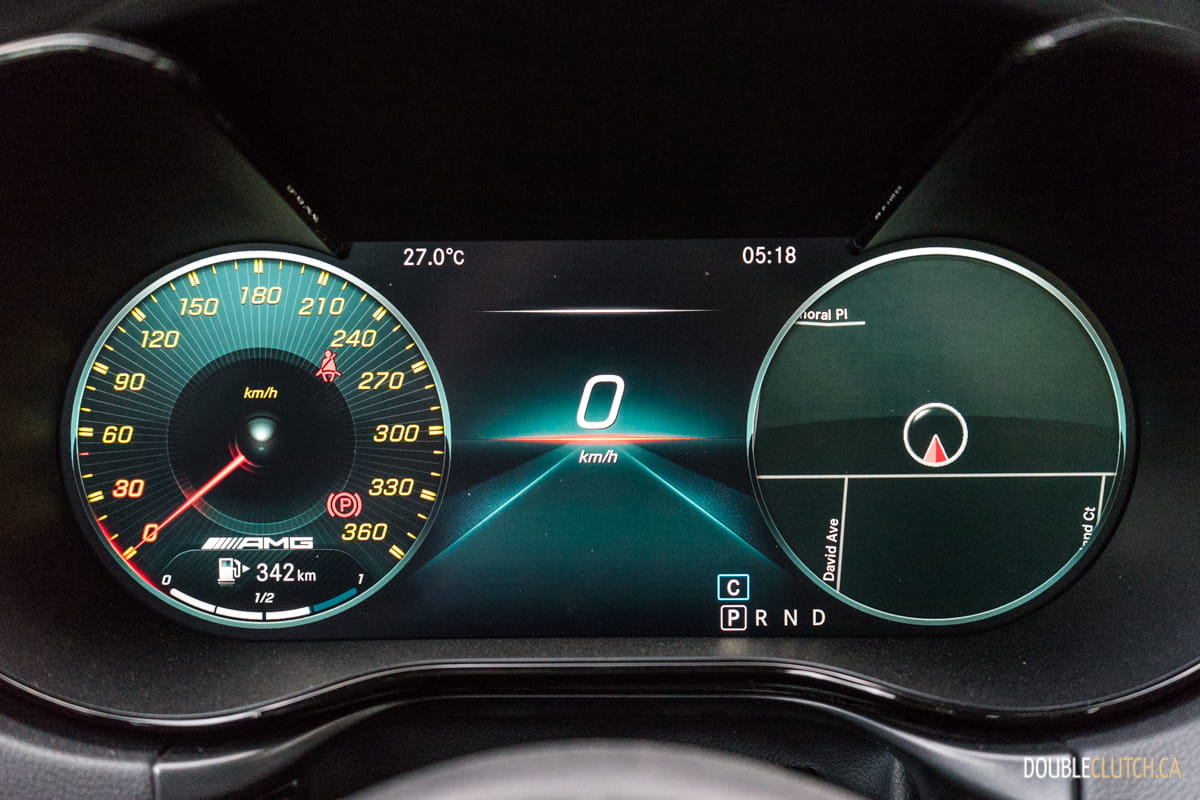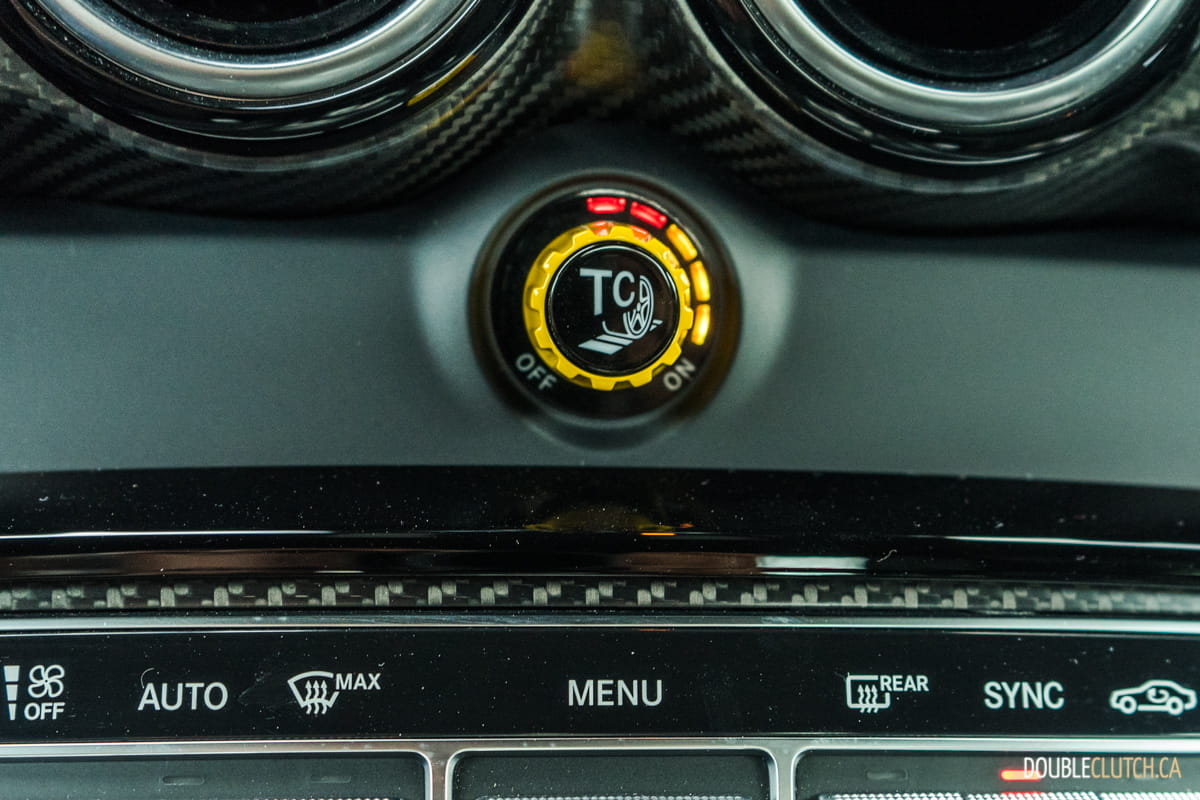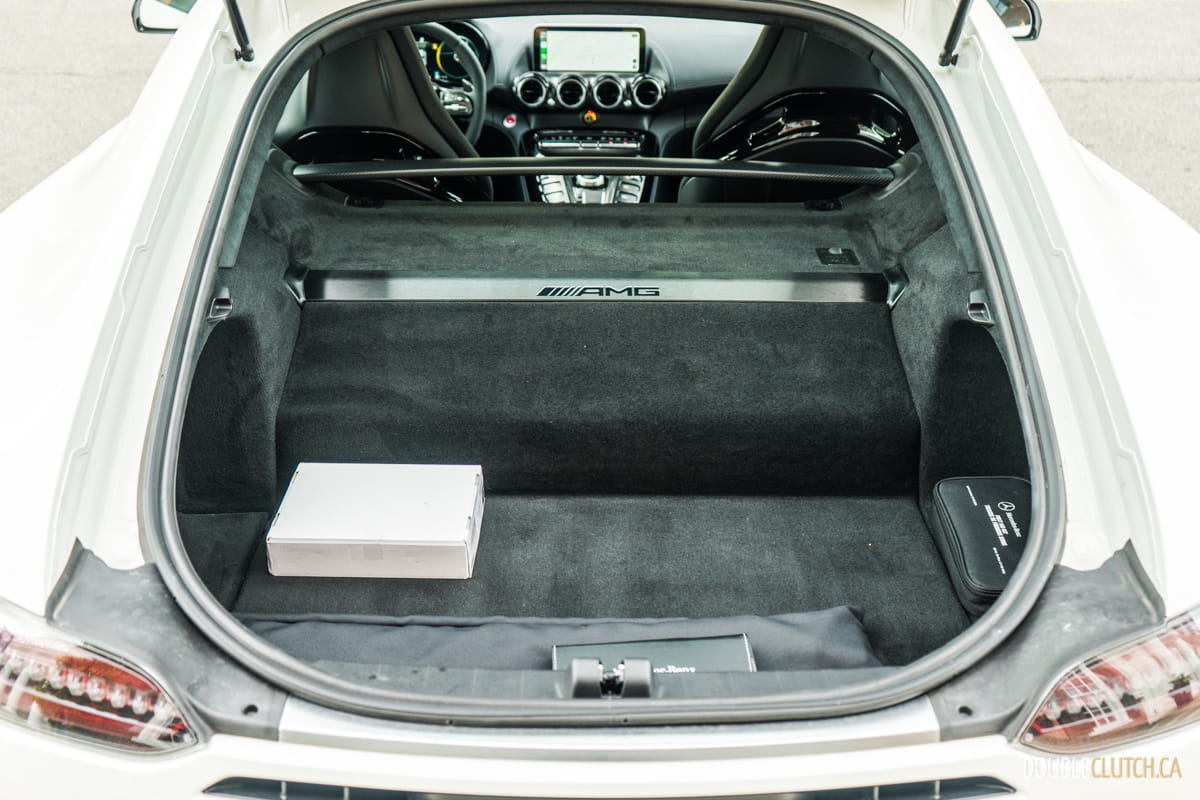After a week behind the wheel of the 2020 Mercedes-AMG GT R Coupe, I came to one conclusion – that I absolutely need one in my life. The flagship “supercar” in Mercedes-Benz’s current lineup, the AMG GT series is comprised of a few serious machines that are capable of just about anything, whether it’s daily commuting or attacking the track on the weekend. This is the track-focused one, and while it’s fairly streetable, its full potential can only be unleashed in a closed-course setting.
First things first – the styling. The AMG GT succeeds the SLS, which was a bit on the frumpy side and not quite as subtle. The GT gets wide hips, a long nose, and an incredible stance that’s reflective of its flagship status. The GT R cranks things up with unique wheels, aero all around, a rear diffuser, and decklid spoiler to indicate that this is serious business. That said, the aggressive aero doesn’t give it a juvenile vibe like a Honda Civic Type R, but rather suits the classic touring coupe lines of the GT. The designo Diamond White paint looks most excellent, and the staggered wheels (19-inches up front, 20-inches in the rear) finish it off beautifully.
Power comes from the hand-crafted 4.0-liter twin-turbocharged AMG V8. With a compression ratio of 9.5:1, output in this application is 577 horsepower at 6,250RPM and a healthy 516 lb-ft. of torque between 1,900 and 5,500RPM. The keen will observe that the E 63 S Wagon (reviewed here) actually has a higher horsepower output, but the AMG GT R’s 0-100km/h time of 3.6 seconds seals the deal. This thing accelerates like a bat out of hell, and the “Sport Plus” and “Race” modes instantly tailor a remarkably engaging driving experience.
So no, purists, it does not offer a manual transmission, but I’ll go on the record to say that it really doesn’t need one. The seven-speed AMG dual-clutch gearbox does a swell job of keeping the car in the right gear, and if the driver chooses to change his or her own gears, the paddles on the wheel are quick to respond. Power is sent only to the rear wheels, and the AMG GT R is incredibly tail happy should you want to let the rear end loose. The steering is an electronically assisted rack rather than the GT C’s hydraulic unit, but it’s still precise and fast, though notably lacking in analog feedback. Grip is phenomenal thanks to the Michelin Pilot Sport Cup 2 tires.
When Mercedes-AMG did away with the naturally aspirated 6.2-liter unit in the former “63-series” cars, enthusiasts were quick to jump on them for taking away something good. The 4.0-liter twin-turbo unit is more responsive, reportedly more reliable, and definitely more fuel efficient. The GT R makes a thunderous noise from the exhaust and while it’s a different sound, it’s definitely no worse than the soundtrack of the 6.2. Ride quality is also excellent, with the adaptive dampers firming up delightfully when asked to, but staying reasonably compliant in street settings. The multi-mode traction control can be adjusted using a neat retro knob on the centre stack.
Inside the 2020 Mercedes-AMG GT R Coupe is an obvious throwback into the previous generation of Mercedes-Benz interiors. The lack of a column shifter is much appreciated, though the shifter is located a touch too far back on the console. There is no MBUX infotainment, but the old system is decent to use and does support Apple CarPlay and Android Auto. Materials are quite nice, with very comfortable seats that provide excellent support when pushing the car through the twisties as well as sharp highway on-ramps.
That said, the interior quality does have some quirks. The center console and some buttons are prone to a very plasticky creak when pressed, and our test car with less than 3,000km on it had an annoying rattle from the rear cargo area when going over bumps or road imperfections. The key is also the previous-unit, which in the GT R’s defence does look classier and suits the coupé’s traditional personality. While these quirks are significant for the price tag the car commands, it’s important to note that every single one of the GT R’s competitors, especially those from Italy, have far more significant issues.
Mercedes-AMG prices the GT R at $190,400 to start, a $20,000 premium over the “plebian” GT C. Our test vehicle was also equipped with premium paint, wheels, and more bringing the total to just over $209,000. It all seems reasonable given the amount of performance the car delivers, except for one thing. Mercedes charges $4,900 for carbon fiber mirror caps. That’s Porsche levels of insanity, and a bit on the high side. That said, the caps do look top notch and go with the menacing look of the car.
At this price point, the competition is fierce, including entries from Germany, Great Britain and Italy. The Aston Martin Vantage uses a tweaked version of the same V8, and offers more fanfare. Audi’s R8 (reviewed here) offers 10 cylinders and a mid-engine layout, and the Acura NSX is also right in the same price window. Those wanting a more street friendly unit will want to opt for the AMG GT C (reviewed here) and its much milder manners, though it still gets the same fantastic drivetrain.
The 2020 Mercedes-AMG GT R Coupe is a machine that’s almost a dying breed. Sitting behind the wheel, drivers look out of a gun-slit windshield and over a long hood, a constant reminder of their prestigious purchase. This is a serious grand touring machine that has enough power and torque to be a real ground shaker. There are very few cars that age well for decades to come, or even appreciate once past that initial depreciation curve, and this is definitely one of them. Buy one while you can; this is one for the books.
See Also:
2018 Mercedes-AMG GT C Roadster








